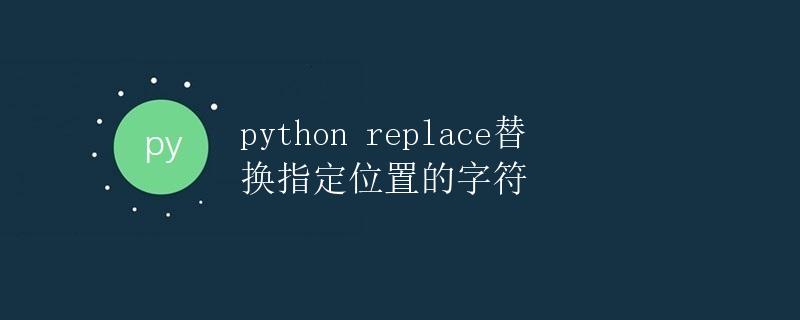Python中replace方法替换指定位置的字符

在Python中,字符串是不可变的数据类型,即无法直接修改字符串中的某个字符。但是,我们可以通过replace方法来替换字符串中指定位置的字符。replace方法是Python中用于替换子字符串的函数,可以方便的实现在字符串中替换指定位置的字符。接下来将详细介绍如何在Python中使用replace方法来替换指定位置的字符。
replace方法
在Python中,字符串对象的replace方法可以用来替换字符串中的子字符串。其语法如下:
str.replace(old, new, count)
其中,str是要进行替换操作的原始字符串,old是要被替换的子字符串,new是要替换为的新子字符串,count是替换的次数,可选参数。
下面我们来看一个简单的示例,使用replace方法将字符串中的”geek”替换为”docs”:
str = "Welcome to geek-docs.com"
new_str = str.replace("geek", "docs")
print(new_str)
运行结果为:
Welcome to docs-docs.com
替换指定位置的字符
有时候,我们需要替换字符串中指定位置的字符,例如将第三个字符替换为”X”。虽然字符串是不可变的,无法直接修改其中的字符,但是可以借助replace方法实现这一操作。
接下来我们将定义一个函数replace_char_at_index来实现替换字符串中指定位置的字符:
def replace_char_at_index(input_str, index, new_char):
if index < 0 or index >= len(input_str):
return input_str
return input_str[:index] + new_char + input_str[index+1:]
str = "geek-docs.com"
index = 4
new_char = "X"
new_str = replace_char_at_index(str, index, new_char)
print(new_str)
运行结果为:
geekXdocs.com
在上面的示例中,我们定义了一个名为replace_char_at_index的函数,接受三个参数:input_str表示输入的字符串,index表示要替换的字符的位置,new_char表示要替换成的新字符。函数首先判断index是否合法,然后通过字符串切片操作替换相应位置的字符。
替换所有指定位置的字符
如果我们需要一次性替换字符串中所有指定位置的字符,可以结合上面的replace_char_at_index函数,通过遍历所有要替换的位置,逐个替换字符。
def replace_all_chars_at_indices(input_str, indices, new_char):
new_str = input_str
for index in indices:
new_str = replace_char_at_index(new_str, index, new_char)
return new_str
str = "geek-docs.com"
indices = [4, 9]
new_char = "X"
new_str = replace_all_chars_at_indices(str, indices, new_char)
print(new_str)
运行结果为:
geekXdocsXcom
在上面的示例中,我们定义了一个名为replace_all_chars_at_indices的函数,接受三个参数:input_str表示输入的字符串,indices表示要替换的字符的位置列表,new_char表示要替换成的新字符。函数通过遍历所有要替换的位置,依次调用replace_char_at_index函数完成替换的操作。
总结
通过本文的介绍,我们了解了如何在Python中使用replace方法来实现替换字符串中指定位置的字符。通过自定义的函数,我们可以灵活地实现替换字符串中任意位置的字符,实现自己的需求。
 极客教程
极客教程